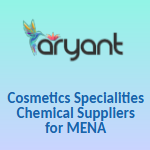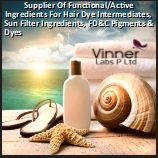We live in a world that highly values aesthetics as well as a healthy environment. Cosmetics not only help to enhance our appearance but also boost our self-esteem and improve our mood. They help to exhibit personal style and, as such, are an important means of social expression.
However, producing quality cosmetics needs safety measures to create a strong connection with the users. And when it comes to something beyond physical health, customers seek cosmetics that are safe to use. Cosmetics need continuous evolution and calibration.
So here are some of the key steps a cosmetic manufacturer takes to make cosmetics safe for their customers:
Product testing:
Depending on the country and region, where manufacturers are commercializing their products, testing the product could be mandatory for safety standards. Product testing is done depending on the product category. The common tests include.
- Microbiological tests to ensure cosmetics are free from any harmful microorganisms’ growth.
- Stability test to ensure the product maintains its function, physical aspect, and chemical and microbiological quality.
- Safety and the toxicological test determine that substances of the product and their mixtures prevent a risk when used by the customers.
- Performance test to check product functionality, durability, and performance. The test demonstrates product claims and ensures that they are real.
- The compatibility test checks whether there is any corrosive effect between the product formulation and packaging.
Safe use of cosmetics preservatives:
Preservatives create an inhospitable environment for the growth of microorganisms and help in maintaining an optimal pH level for our skin health. Water is the main ingredient of all cosmetics and microorganisms grow readily in water. Therefore, preservatives in cosmetics can prevent the growth of microorganisms in cosmetics making them safe for use.
One of the major issues solved by adding preservatives is contamination. As our hands contain microorganisms and are not often sterile, every time we put our fingers into the product bottle we are introducing new microorganisms into the product that can spoil the product without preservatives.
Also, cosmetics kept in our bathrooms become humid and warm during the showers and can also be close to a toilet. This can mist particulates onto the products. This is where preservatives help in preventing the growth of microorganisms in the washroom environment.
The use of antioxidants for cosmetics:
Using antioxidants such as vitamin E acts as an active antioxidant to protect the cosmetics and ensure the color and texture of the products. Antioxidants are responsible for the chain-breaking of radical scavengers and for inhibiting the oxidation reaction; by these mechanisms, antioxidants can prevent oxidative damage. Vitamin C is one of the most studied antioxidants. Presence of vitamin C offers many benefits to the skin, as a scavenger of free radicals, also boosting collagen production that leads to firmer skin, while also causing dark spots to fade.
Safe packaging:
Manufacturers opt for healthy cosmetic packaging that is not only healthy for their customers but also for Mother Earth. Airless packaging, pump bottles with one-way valves, and jars with closed lids ensure cosmetics are not contaminated with bacteria. A safe and careful manufacturing process is important to keep the product sterile and safe for use.
For all the reasons mentioned above any good manufacturer in the cosmetic industry should be headed by competent leader and staffed by an adequate number of personnel who have the right knowledge and skills relevant to the manufacturing of high-quality cosmetics.


